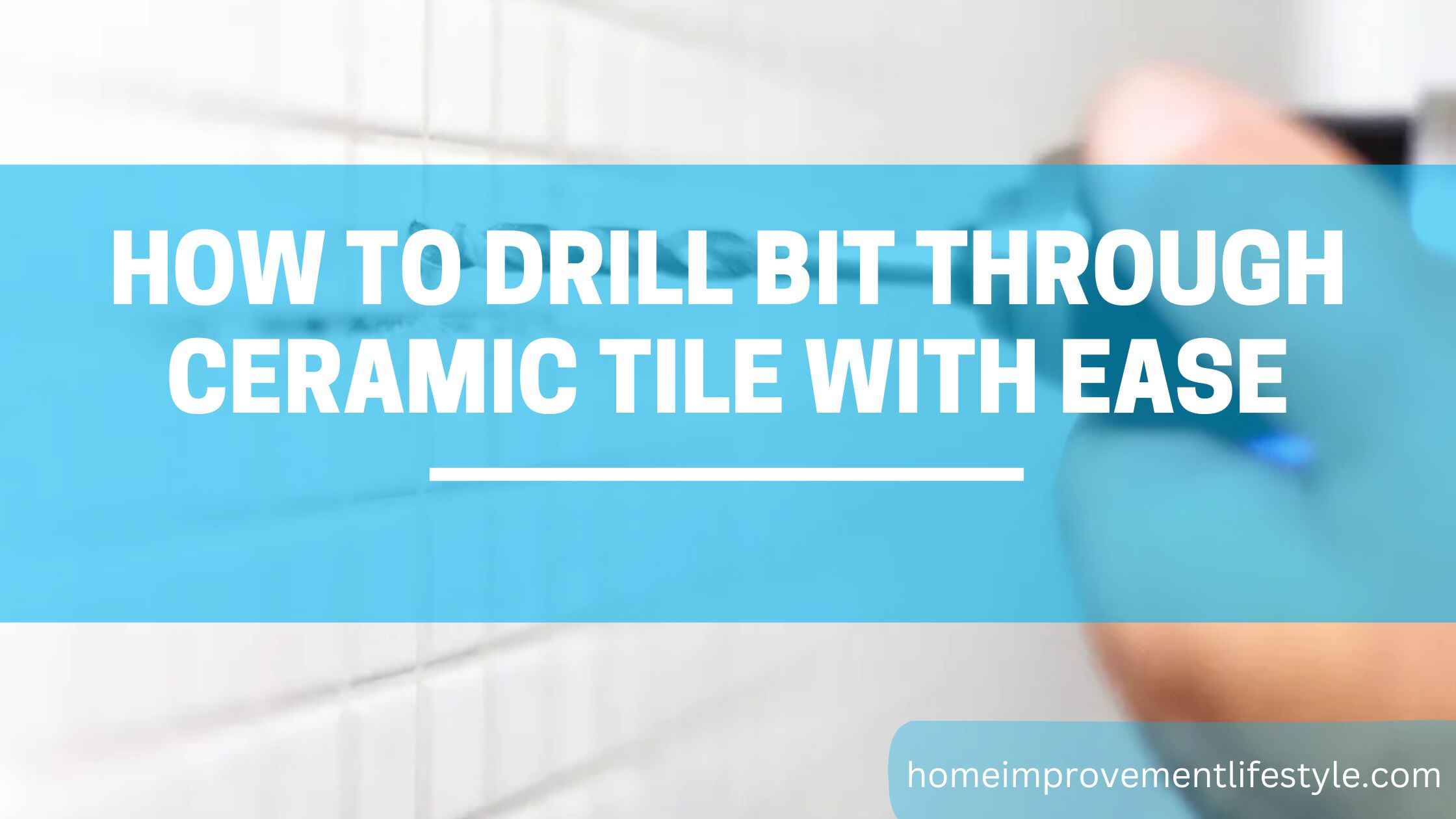Putting holes in tiles to create a stunning is a routine task in both newly tiled and older bathrooms. Drilling through tile is required for almost everything that mounts to the wall, from installing equipment for rolls of toilet paper and soap dishes to building a new medicine cabinet.
Because these bathroom accessories are typically attached with wall anchors, cutting through tile is really only part of the process. You must also drill into the substrate behind it without causing damage that might stop the walls anchoring from working.
IN 5 EASY STEPS, LEARN HOW TO DRILL BIT THROUGH TILES
Step 1: Be Aware Of Your Tiles
The sort of tile you are working with is one of the first things you should consider if you want to understand how to drill bit through tile. If you understand the features of the material that are attempting to bore through, you will have a greater sense of the scope of the job at hand.
Because porcelain tiles are so dense, they are more difficult to drill through than ceramic tiles. As an outcome, drilling through porcelain may necessitate more effort and planning than other types of tile. A specialised drill bit capable of penetrating the solid object of porcelain tiles is also required. Drilling through stone tiles is the same.
Now that you understand what you can expect, let’s have a look at the gear you’ll need to drill through tiles.
Step 2: Find the right ceramic tile bit.
Normal drill bits for tile will not operate, but don’t worry. A carbide bit can be used to drill ceramic tile, while a diamond-tipped bit is required for glass and porcelain.
While that may appear to be pricey, a 14-inch diamond-tipped tip costs less than $20, and a diamond bit that has the same size costs less than $10. If in doubt, go with the diamond bit. It can drill through any kind of tile.
Step 3: Check & Record A Place
If you’ve ever tried to drill a bit for tile, you’re surely aware that the bits like to float across the surface, making it hard to keep them in place. That is a major issue. If you make a mistake, you will scrape or crack the tile.
One simple approach for creating tension is to cover the spot wherever you wish to drill a hole. with masking tape. Measure the area, make an X in it, then apply the masking tape. Check it again after you’ve applied the sticky tape to ensure you haven’t missed the hole. When you begin drilling, you will have enough ground contact to grip the drill.
If you’ve got more single holes to drill and don’t want to repeat the operation, you might make a template out of a piece of wood. Make a hole in the wood that is the exact size as the drill bit that you are going to use. Put it over the hole drilled and secure it with your spare hand.
Step 4: Drill carefully
The tape not only makes marking the wall easier, but it also keeps the drill bit from slipping when beginning the hole.
Go slowly, especially at the beginning, to ensure that the hole finishes up where you’d like it.
Once the hole has started, you can raise the drill speed, but not all the way.
Drill the hole using continuous pressure and a moderate speed to avoid overheating and ruining the drill bit.
Step 5: Boost towards the ending
When the bit passes through the tile, the resistance will change. You can now speed up the drill while decreasing the pressure. This will permit you to extend the hole through into wall or backer panel while causing minimal harm.
After you’ve finished drilling, put the anchors into position, screw the hardware into place, and vacuum away any dust.
FAQs
Which is the Ideal Tile Drill Bit?
The finest drill bit for bathroom ceramic tile is a carbide-tipped masonry bit. Regular twist drill bits will not penetrate the fire-hardened coating.
Drilling a Wide Hole in Tile Without utilizing a Hole Saw
But what happens if you need to drill a 2-inch hole to instal a plumbing stubout? Contractors normally utilise costly hole cutting tools with carbide-grit tool tip, but there is an alternate method.
With such a felt-tip pen or greased pencil, trace the outline of the hole on the tile.
Drill a number of tightly packed holes around the circular with a 14-inch masonry bit. Then, using a hammer, gently tap each tiles all along circle of holes.
Tap within the pattern and be calm; it may take a few minutes for the core of the hole to break loose. The hole tip will be harsh, but a beautiful escutcheon plate will conceal it.
Conclusion
If you follow this advice, you’ll be well on your route to drilling through tile successfully. There are a few critical things to remember: make sure you have the correct drill bits, maintain them chilly, and go slow and steady! Drilling through tiles isn’t a race, and patience is the most important trait to have when executing this operation. You’re almost certain to shatter the tile you’re drilling if you rush the procedure (and fail to avoid overheating).


